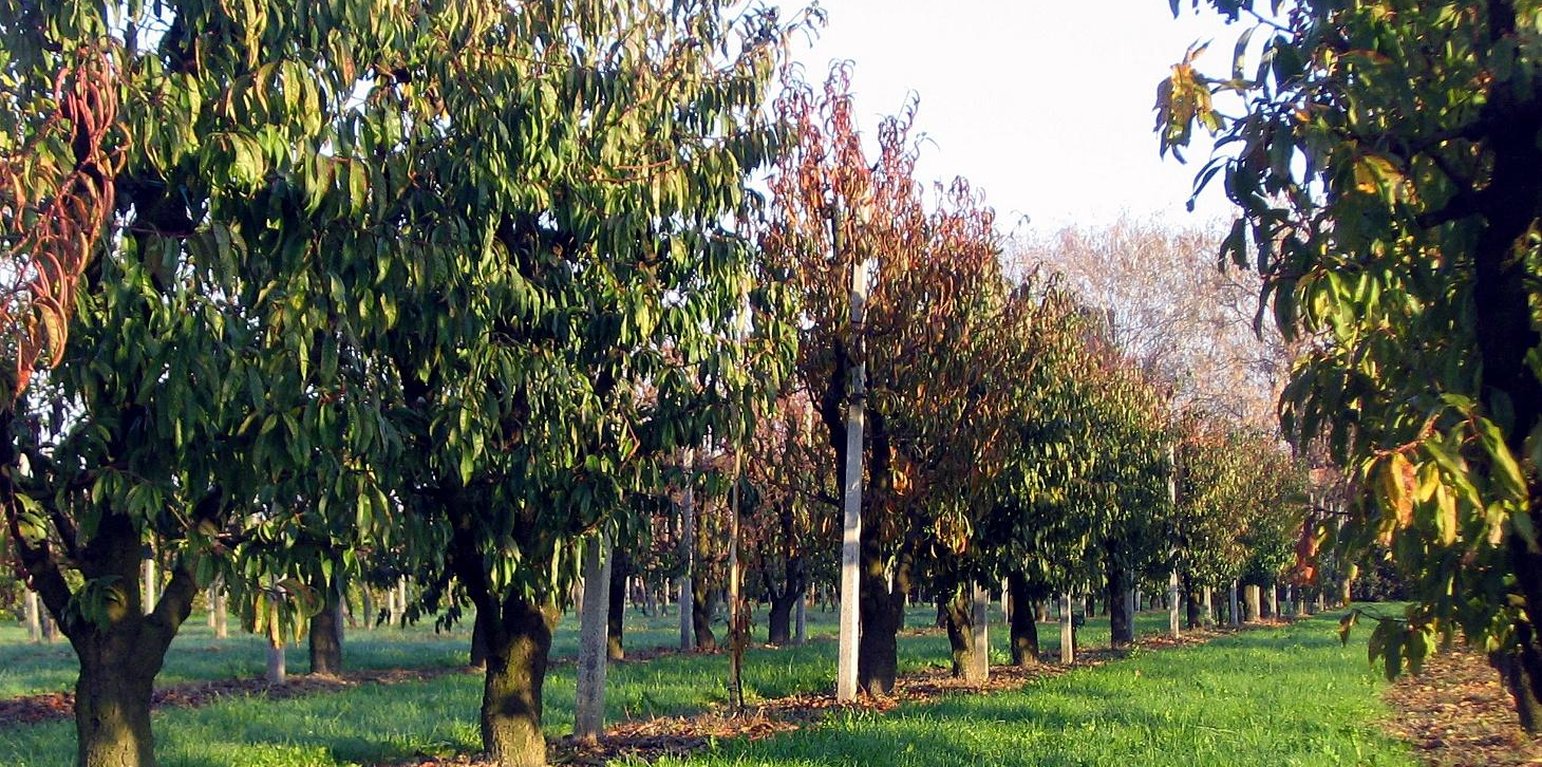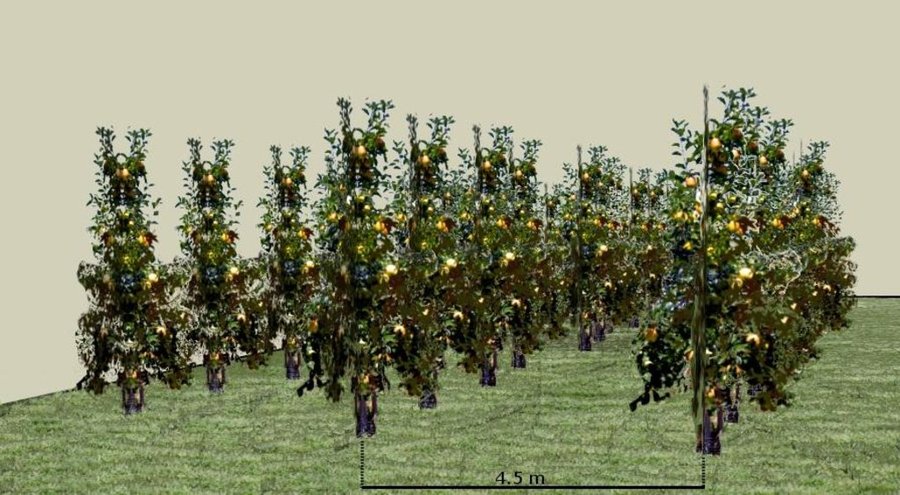



The Veneto region has a strong tradition of fruit production, estimated in ca. 4% of total turnover in the agricultural sector. A sustainable fruit orchard management has the ambition to combine fruit production with the maintenance of soil fertility. The increase or preservation of soil fertility can be supported by means of soil management techniques, such as green cover. Compared with systems that does not use a permanent soil protection, green cover provides long-term agronomical and environmental benefits due to a reduction of negative impacts on agro-ecosystems. The technology is an effective practice to provide a natural supply of mineral elements to the soil surface, while the stabilisation of root system improves the soil physical properties. Moreover, the permanent soil cover prevents water erosion and limits the leaching of nutrients (particularly nitrates) and pesticides.
Purpose of the Technology: The purpose of adopting a permanent green cover in orchards is the prevention of soil and water degradation, especially soil erosion by heavy rainfall events and water. Secondary purpose is restoring soil biodiversity through the soil protection from pesticides, heavy machinery equipment and loss of soil structure.
Establishment / maintenance activities and inputs: Green cover comprises naturally occurring, or sown, perennial grasses which form the permanent soil cover. The stabilisation of an herbaceous covering over the years allows the passage of machinery after rainfall events by improving the efficiency of farming operations. Due to the competition with fruit trees for nutrients, during the first 2-3 years following orchard plantations the soil is handled without a continuous cover or with a large strip of bare soil around the row. After system stabilisation, green vegetation is periodically cut, depending on the seasonal variability, and left on the soil surface as mulch.
Natural / human environment: If water is not a limiting factor for fruit production, the permanent vegetation cover is the best way to improve soil physical properties and generally soil fertility with a low economic investment. Moreover the technology acts as a filter for water depuration due to a reduction of water runoff and the consequent deposition of suspended solids sediment-bound nutrients.
地点: Veneto region, Italy, 意大利
分析的技术场所数量:
技术传播:
在永久保护区?:
实施日期: 10-50年前
介绍类型






| 对投入进行具体说明 | 单位 | 数量 | 单位成本 (不适用) | 每项投入的总成本 (不适用) | 土地使用者承担的成本% |
| 劳动力 | |||||
| Grass cutting | ha | 1.0 | 100.0 | 100.0 | 100.0 |
| 植物材料 | |||||
| Seeds | ha | 1.0 | 330.0 | 330.0 | 100.0 |
| 技术建立所需总成本 | 430.0 | ||||
| 技术建立总成本,美元 | 430.0 | ||||
| 对投入进行具体说明 | 单位 | 数量 | 单位成本 (不适用) | 每项投入的总成本 (不适用) | 土地使用者承担的成本% |
| 劳动力 | |||||
| Green cover cutting | ha | 1.0 | 100.0 | 100.0 | 100.0 |
| 设备 | |||||
| Green cover maintenance: cutting and mulching | ha | 1.0 | 305.0 | 305.0 | 100.0 |
| 肥料和杀菌剂 | |||||
| Biocides | ha | 1.0 | 63.0 | 63.0 | |
| 技术维护所需总成本 | 468.0 | ||||
| 技术维护总成本,美元 | 468.0 | ||||